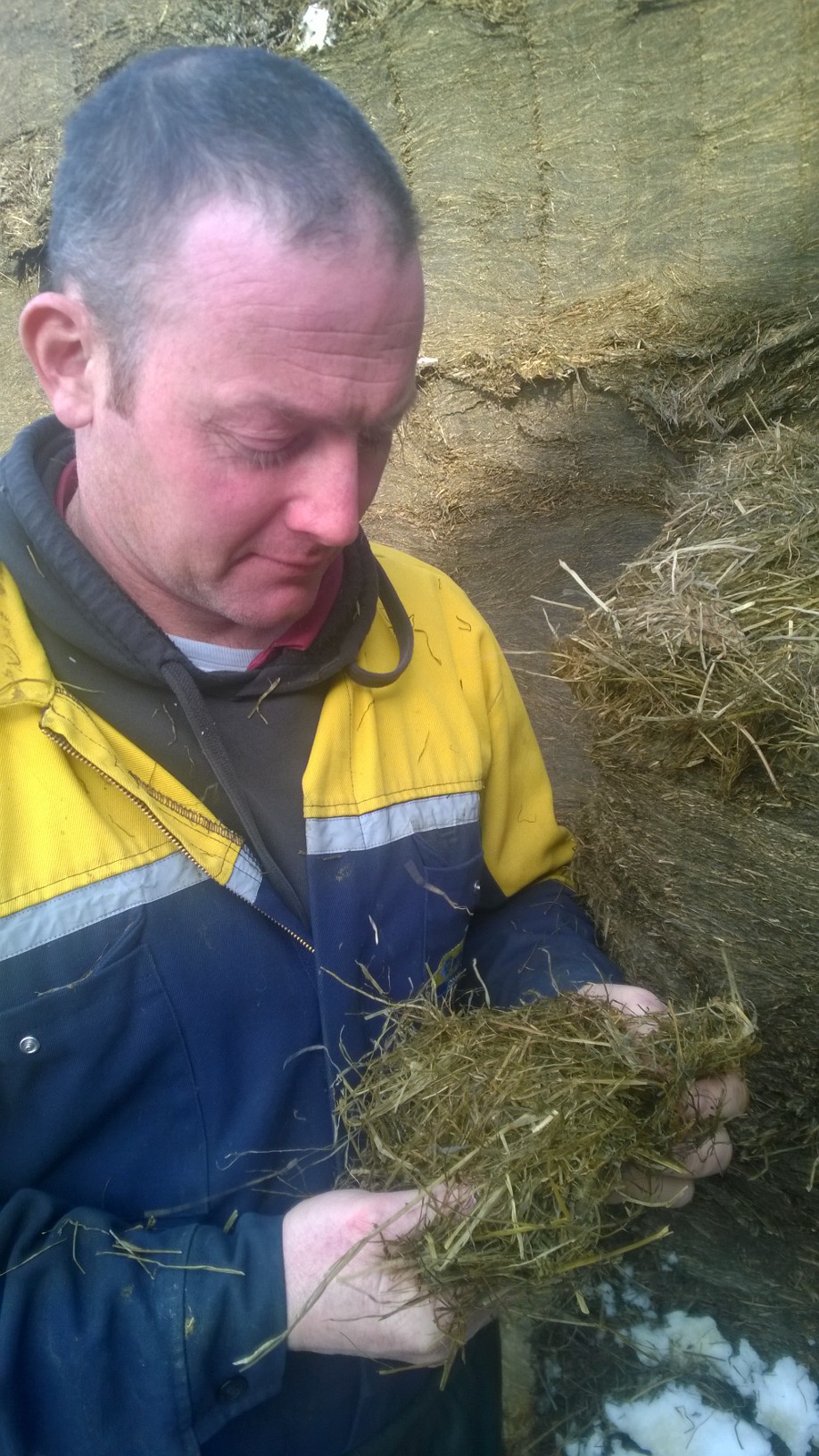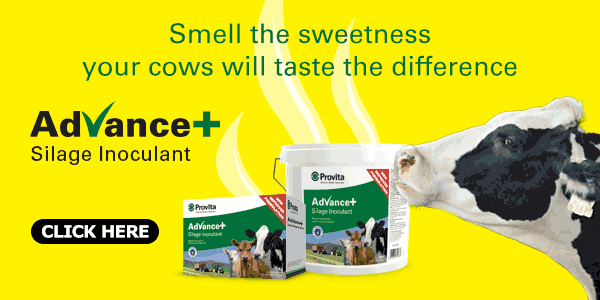At this time of the year many farmers are bombarded with information on silage inoculants. Many products claim to be better that the next one, so how can actually they be compared? With so much variation between years and cuts, it’s very difficult to compare silage inoculants or even treated verses untreated crops.
The first thing to check is, are the bacterial strains in the silage inoculant approved within the EU as a feed additive? This EU registration system has set of standard parameters to measure efficacy such as dry matter losses, pH, lactic acid and ammonia plus stability for wholecrop and maize silages.
There is data within the system but it is submitted per stain making it difficult to find all the data and then compare it. However it does summarise if the silage inoculant has been tested and has shown efficacy on easy, moderate and difficult to ensile crops. Some of the inoculants, in particular the ones that only apply 100,000 bacteria per g of grass, failed to show a benefit in moderate and difficult to ensile crops. They did demonstrate benefits on easy to ensile crops where sugars were above 3% on fresh material, however this would have been a rarity in the 1st cuts of 2014.
Many of the trials in the EU registration system used mini silos to compare the differences between treated and untreated silages. As part of their ongoing commitment to clinical research and on-farm testing, Provita decided to also use mini silo tests on Northern Ireland farms in 2014 to test their newly reformulated Advance+. This technique means that treated and untreated silage from the same field just a few metres apart can be tested and compared. This means that the same grass, from the same field, from the same cut and the same conditions can be compared equally.
The benefits from the Advance+ treated silage were so obvious as soon as the lid was opened farmers could smell the extra sugars and feel the drier crops. If these were left open for a few days the difference became even more obvious with the treated silage remaining sweet smelling and the untreated going off. Tests then carried out at various laboratories confirmed these benefits, see table.
One of the statements commonly said about silage inoculants is that they all do a similar job and there’s not much difference in them. However that’s a bit like saying all cows are the same they will give you the same level of milk, this is obviously not the case with cows and it has become apparent it’s not the case with silage inoculants either. When all the above parameters are considered compared with other bands in terms of EU registration data and on-farm tests Advance+ has to date performed better than all other inoculants.
Provita can arrange to do these tests on any farm wanting to use Advance+ this year so that the benefit of the Advance+ silage inoculant can be clearly demonstrated.
Beef farmer sees the benefits of Advance+
Declan Rafferty farms in partnership with his brother-in-law Aidan Quinn in Pomeroy, they run 75 suckler cows and sell the offspring as strong stores or finish as beef depending on market fluctuations. The breeds are mainly Simmental, Limousin crosses with a Stabiliser bull being tried this year.
The farm is part of the Northern Ireland Suckler Beef Programme which is a joint initiative between Irish Farmers Journal, CAFRE and ABP. All the outputs and performance of the farm are therefore measured continuously.
Currently first stage finishing beef, 370kg to 500kg are growing at 1kg DLWG with good quality second cut silage and 3kg of meal. Second stage beef are growing at 1.3kg DLWG with good quality second cut silage and 5kg of meal to add some fat cover.
Good quality grass silage is essential to achieving a high output from the farm. Slurry is applied in split dressing and fertiliser is applied early. Grass is regularly reseeded with Shanmaghery grass seed which has been developed especially for the area.
They aim to cut grass in the 3rd week of May which is about three weeks earlier that they are used to. This means the grass is leafier and contains more nutrients. It is wilted for 24 hours depending on the weather and then ensiled by themselves as part of a three farm machinery ring.
Advance+ is then applied to improve the fermentation and reduce the risk of spoilage. The benefit of using the inoculant was questioned when the beef prices were low in early 2014. However when the mini silo tests were carried out and tested the benefits of the Advance+ silage inoculant was very clear. Using the AFBI predicted intake system 300kg store animals feed silage only would grow up to 32% quicker, obviously the rates will vary depending on the level of meal fed.
Declan summarized the benefit of Advance+ “it helps us achieve good growth rates and the face kept well even with a 35% dry matter on the second cut. It also helped keep sugars high on the first cut with the mini silo test showing it kept twice as much sugar in the crop, our fermentations and intakes are very good for both cuts.”
Dairy farm sees clear benefit of 1ltr per cow per day from Advance+
Jim and Dean Wight from Portadown farm 180 dairy cows with bull calves taken to beef and 800 store lambs are also bought and sold each year. The dairy herd is achieving a rolling average of over 10,000 litres.
Dean pays close attention to every detail on the farm and everything is considered on a cost benefit basis. He was interested in trying Advance+ as it appeared to be different from all other silage inoculants. Dean was curious about the mini silo tests, he therefore set them up on his farm so that he could measure what the benefit or otherwise would be of Advance+, “I liked the idea of doing the mini silo test on my own farm, it is as close as I can get to doing a scientific experiment to fairly test silage inoculants.”
However it became obvious that there was a big difference before the mini silo was even open. Dean explained “We have a silo for 2nd cut that is an L shape and we have to open a long narrow face which can be exposed for 3.5 weeks and we normally lose 10% in wastage. This year however we would have lost less than 1%. The silage is really stable despite being 35% to 37% dry matter.
Dean continued “the difference when we opened the mini silo test was remarkable, the Advance+ treated silage was much sweeter smelling and you could feel that it was much drier”.
The AFBI predicted intake model has indicated that he would be getting an extra 1ltr per cow per day which will give a return on investment of 6 to 1 or an extra £75 profitability per cow per year at a 25p per litre, this would rise to £93 per cow per year if milk prices return to where they should be next winter.
“Advance+ has done very well for us, the cows are milking well and intakes are very good, it is very good value for money. It gives better animal performance, is a good insurance against bad fermentation and represents a sound investment.”
Advance+ is available from selected agricultural merchants throughout Northern Ireland. Early order offers are available plus applicators are available for all types of harvesters and balers. For more information on Advance+ silage inoculant availability and deals call Tommy Armstrong on 07720101444.

